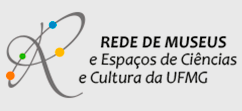
Autoria
– Maria Tereza Barbosa-Campos
Resumo
Resumo não disponível.
Palavras-chave: Cerrado, morfologia vegetal, botânica
Abstract
Ouratea castaneifolia (Ochnaceae) occurs in semideciduous forests and in their transition to the cerrado. This study aimed to characterize the leaf anatomy and morphology of individuals which inhabit the border, the understory and the canopy of the forest at the Estação Ecológica da UFMG. The height, diameter, number and perimeter of the stems, the leaf area, stomata density and leaf histometry of the individuals were quantified. Usual methods in plant anatomy were used to produce histological slides. Individuals reaching the canopy are trees, with a single stem, up to 10 ± 2.5 m high. In the understory, they are herbaceous with 1-2 stems, up to 1.4 ± 0.5 m high. In the border of the forest, they are shrubs with 1-5 stems, and up to 3.2± 0.6 m high. The leaf histometry is significantly different between individuals of the border and the understory. The leaf of O. castaneifolia presents the same standard cell and tissue organization in all individuals, suggesting intense lignification regardless the luminous condition and the architecture of the individuals.
Key Words: Ouratea castaneifolia, Ochnaceae, leaf anatomy, radiation, sun and shade leaf
Referência
Fonte: Repositório Institucional Da UFMG
Ano: 2011




